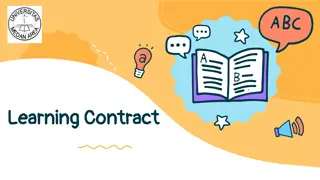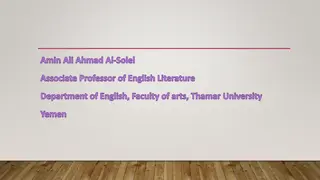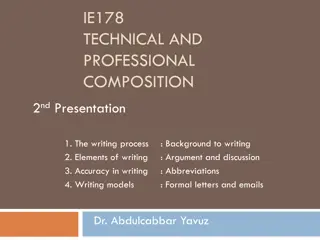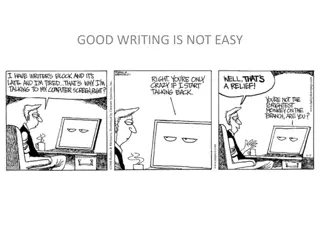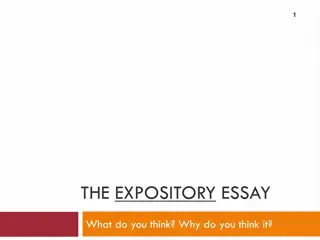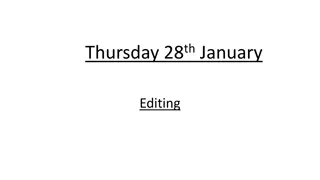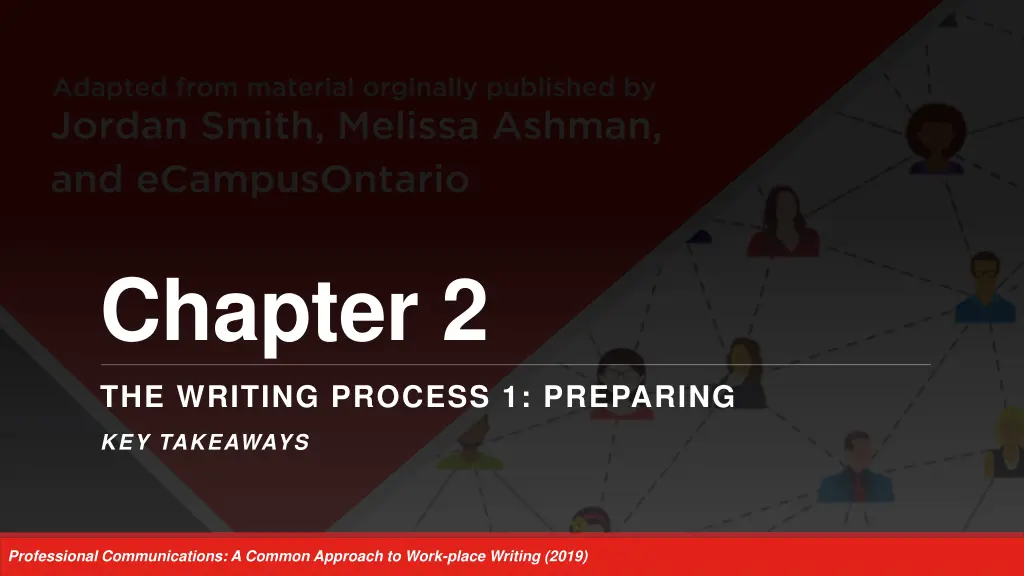
Workplace Writing Process: Audience Analysis and Preparation
Learn how to prepare for workplace writing by understanding your purpose, analyzing your audience, and considering secondary audiences. Discover tips for writing effectively for audiences of various sizes and demographics.
Download Presentation

Please find below an Image/Link to download the presentation.
The content on the website is provided AS IS for your information and personal use only. It may not be sold, licensed, or shared on other websites without obtaining consent from the author. If you encounter any issues during the download, it is possible that the publisher has removed the file from their server.
You are allowed to download the files provided on this website for personal or commercial use, subject to the condition that they are used lawfully. All files are the property of their respective owners.
The content on the website is provided AS IS for your information and personal use only. It may not be sold, licensed, or shared on other websites without obtaining consent from the author.
E N D
Presentation Transcript
Chapter 2 THE WRITING PROCESS 1: PREPARING KEY TAKEAWAYS Professional Communications: A Common Approach to Work-place Writing (2019)
2.1: Knowing Your Purpose for Writing The general purpose is the end-goal of communication such as aiming to inform, persuade, motivate, entertain, or a combination of these and other effects. The specific purpose always depends on the situation at hand. Knowing your general and specific purposes for writing at the outset of the writing process helps keep you on track with topic selection. Chapter 2: The Writing Process I: Preparing
2.2: Analyzing Your Audience Knowing your audience by their size, position relative to you, knowledge of your topic, and demographic helps you craft your message content and style to meet their needs. Chapter 2: The Writing Process I: Preparing
Profiling Your Audience How big is my main audience? Is it one person, two, a few, dozens, hundreds, or an indeterminately large number (the public)? Who might my secondary or tertiary audiences be (e.g., people you can see CC d) What is my professional or personal relationship to them relative to their position/seniority in their organization s hierarchy? How much do they already know about the topic of my message? What is their demographic i.e., their age, gender, cultural background, educational level, and beliefs? Chapter 2: The Writing Process I: Preparing
Writing for Audiences of Various Sizes Writing to one person is a relatively straightforward task, but you must adjust your writing style to accommodate a larger audience. The larger the group, the more general and accessible your language must be. Use familiar language, expressions and illustrations; watch unique English idioms. Writing to large audiences cannot reveal any bias in terms of gender, ethnicity, age, ability, or orientation. Because using masculine singular pronouns like he, his, and him would exclude the female half of your audience, for instance, you would use the gender-neutral plural pronouns they, their, and them instead (using those plural pronouns for singular situations is also becoming acceptable). Chapter 2: The Writing Process I: Preparing
Considering Secondary Audiences I Always consider secondary or even tertiary audiences for any message you send because, besides secondary audiences you may invite, you have little-to-no control over what tertiary audiences see your message unless confidentiality can be somehow guaranteed. Even in more harmless and routine information sharing, you must adjust your message for any known or unknown secondary audiences. Chapter 2: The Writing Process I: Preparing
Considering Secondary Audiences II If you CC (carbon copy) your manager or other interested stakeholders in any email, for instance, you will be more careful than you otherwise would be to ensure that your message is completely free of any language or content that would make you or them look bad. Even if you don t yourself designate CC recipients, as explained above, someone else could. Chapter 2: The Writing Process I: Preparing
2.3: Selecting Appropriate Channels Choose the most appropriate communication channel for the occasion by taking into account the full spectrum of traditional and electronic means, as well as your own and your audience s needs. Chapter 2: The Writing Process I: Preparing
Considering Your Relationship to the Audience Just as you might wear your best clothes for an important occasion like a job interview or wedding, you must respectfully elevate the formality of your language depending the perceived importance of the person you re communicating with. Formality in writing requires correct grammar and punctuation; it also involves carefully selecting words that are slightly fancier than the colloquial ( informal ) words you would normally use in everyday situations. Chapter 2: The Writing Process I: Preparing
Considering Your Audiences Level of Knowledge A key preparatory step whenever sharing information is to gauge approximately how much your audience knows about the topic you re writing about so that you provide no more and no less information than is necessary. Appropriately gauging your audience s level of knowledge extends to the language you use, as well. Chapter 2: The Writing Process I: Preparing
Considering Your Audiences Demographic Depending on your profession, you may have to deal with people of all ages and levels of education. The key to gauging the level of one s understanding is always to begin communication with a mid-level diction and conversational tone in your opening message, then adjust based on the feedback message. Being nonjudgmental as well as respectful towards those of different cultures and religious beliefs is also key to effective communication. Chapter 2: The Writing Process I: Preparing
Selecting Appropriate Channels Choose the most appropriate communication channel for the occasion by considering the full spectrum of traditional and electronic means, as well as your own and your audience s needs. Choosing channels wisely can mean the difference between a message that is received and understood as intended (the goal of communication), and one that is lost in the noise or misunderstood in costly ways. Chapter 2: The Writing Process I: Preparing
Acknowledgements Acknowledgements Professional Communications: A Common Approach to Work-place Writing Professional Communications: A Common Approach to Work-place Writing The Professional Communications: A Common Approach to Work-place Writing slide decks are licensed under a Creative Commons Attribution-ShareAlike 4.0 International License, except where otherwise noted.


